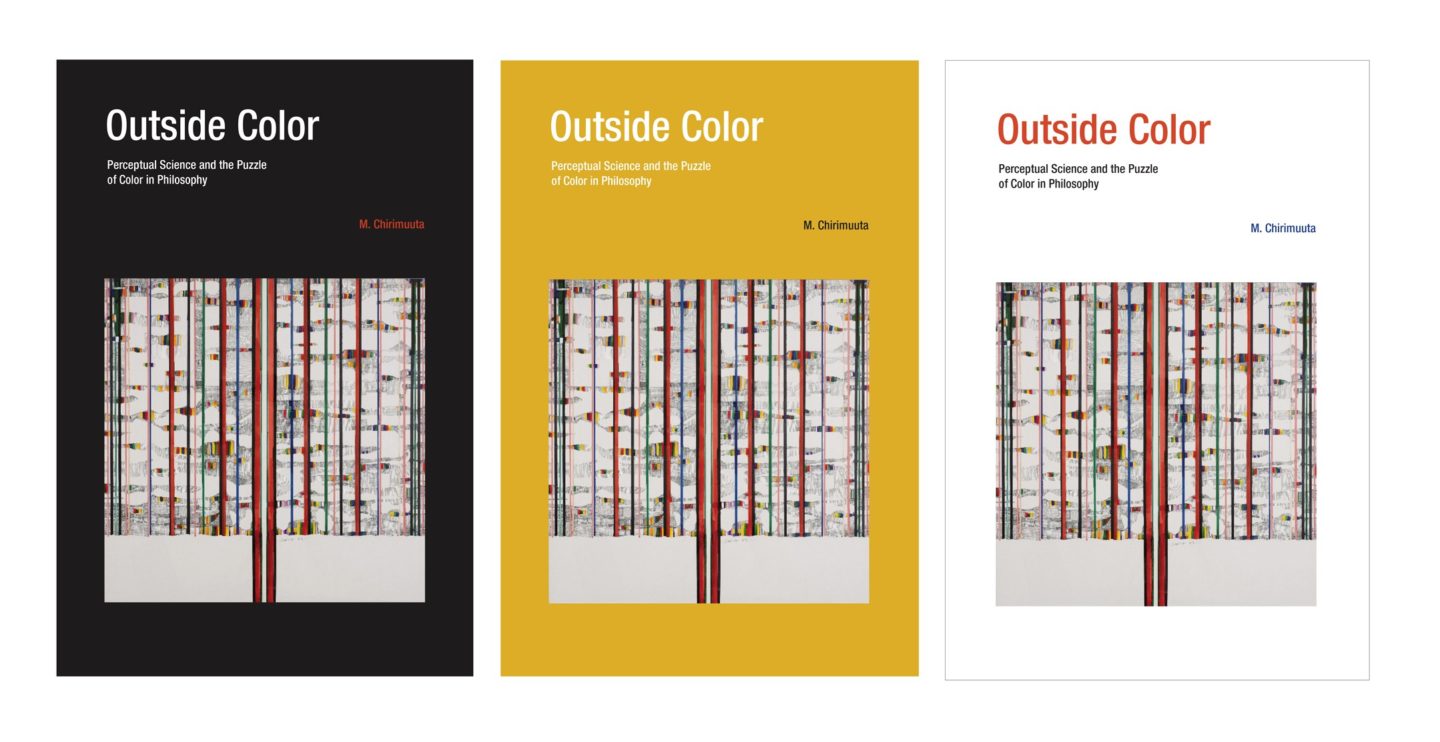…. the whole philosophy of perception from Democritus’s time downwards has been just one long wrangle over the paradox that what is evidently one reality should be in two places at once, both in outer space and in a person’s mind. (James 1904:481)
I chose this quotation from William James’s essay, “Does ‘Consciousness’ Exist?” to be the epigraph for my book Outside Color. I love James’s breezy over-generalization. Actually, there are many different problems (“wrangles”) that fall under the heading of philosophy of perception, and even just philosophy of colour. But James pinpoints the one that concerned me the most as I was writing the book: how can we reconcile ourselves to the apparently dual nature of colour? What kinds of qualities are colours, such that we attribute them to objects around us and yet we frequently take them to be somehow constructed or generated by our brains?
More often than not the wrangle over colour takes the form of a debate over which theory of colour ontology best conforms to our everyday beliefs about colours (e.g. that flamingos are pink and so are strawberry ice creams) while at the same time achieving consistency with known scientific facts (e.g. that the surfaces of objects reflect and absorb light in different amounts depending on the wavelength, and that the cones in our retina have three kinds of wavelength selectivity). While various philosophers have argued, on the one hand, that colours are some kind of perceiver independent property of flamingos and ice-creams, or on the other, that colours exist only in the mind of the beholder, the theory I favour asserts that pink is perceiver dependent but not merely mental.
This approach to colour is known as relationism. Jonathan Cohen’s (2009) The Red and the Real is the most prominent of recent statements of the view, while Thompson’s (1995) Colour Vision is also an important work in the area. Cohen’s master argument for relationism is based on cases of perceptual variation, such as the infamous #Dress (see here for the Brains Blog roundtable). In my work, I was particularly concerned to see if there were any findings or concepts in vision science which leant support to relationism.
If you look in the scientific literature you can find the occasional endorsement of relationism. For instance, Leo Hurvich, one of the originators of the opponent coding theory of color vision (much discussed in Hardin’s (1993) Color For Philosophers) writes that:
“It should be clear by now that object color is not physical light radiation itself, that it is not something that inheres in objects….nor is it only the nervous excitation that occurs in the eye and brain of an observer. In our perception of object color all these elements are involved.” (1981, 51; quoted in Cohen 2009, 45)
But there are probably just as many scientific hat-tips to rival colour ontologies. So I asked myself if there were any deeper reasons why knowledge of vision science might lead one to favour relationism.
In the book I put forward the case that philosophy, in contrast with the science of perception, has been overly concerned with the matter of correspondence—the question of whether anything in our subjective perceptual states matches closely enough to physical states of affairs in the outside world. The interests of science are more pragmatic—trying to find out how it is that perceptual systems allow animals to function in the world. How does colour constancy work, and what does it allow us to do? Why are birds and reptiles endowed with more photoreceptor types than mammals? The opponents of relationism, I argue, are caught up in the long wrangle over the inner versus outer nature of colour while the scientifically informed view is to take this to be a false opposition.
To end here, I will return to James. The target of James’s sixth lecture on pragmatism is the correspondence conception of truth. “Truth, as any dictionary will tell you, is a property of certain of our ideas. It means their ‘agreement,’ as falsity means their disagreement, with ‘reality.’” (James 1901/1981, 91)
But what, he asks, should we mean by ‘agreement’ and ‘reality’? “The popular notion is that a true idea must copy its reality” (p.91), whereas the pragmatist is impressed by the difference that it makes to possess the truth (p.93). In the view that I call perceptual pragmatism (similar to Matthen’s 2005 action relative realism), the veridicality of sensory states and the reality of perceived properties, like the colours, is underwritten by their usefulness. Pink is real if seeing items in that colour aids some activity—like finding the ideal present for a little girl. Or maybe not….. In the next post I’ll give some detailed examples of the various functions of colour vision.
Many thanks to John Schwenkler for the invitation to the blog this week!
References:
Cohen, J. (2009). The Red and the Real. Oxford: Oxford University Press
Hardin, C. (1993). Color for Philosophers (second ed.). Indianapolis, Indiana: Hackett.
James, W. (1981/1907). Pragmatism. Hackett.
James, W. (1904). Does ’consciousness’ exist? The Journal of Philosophy, Psychology and Scientific Methods 1(18), 477–491.
Matthen, M. (2005). Seeing, Doing and Knowing: A Philosophical Theory of Sense Perception. Oxford: Oxford University Press.
Thompson, E. (1995). Colour Vision. London: Routledge.


Hi
Great post and I’m looking forward to reading your book. Just interested in hearing your thoughts on Akins and Hahn’s paper ‘The Peculiarity of Color’ where they suggest that looking for a one to one mapping from color appearances to an objective property would by definition make color (or any property) subjective.
Cheers
Liz